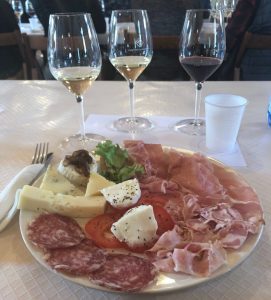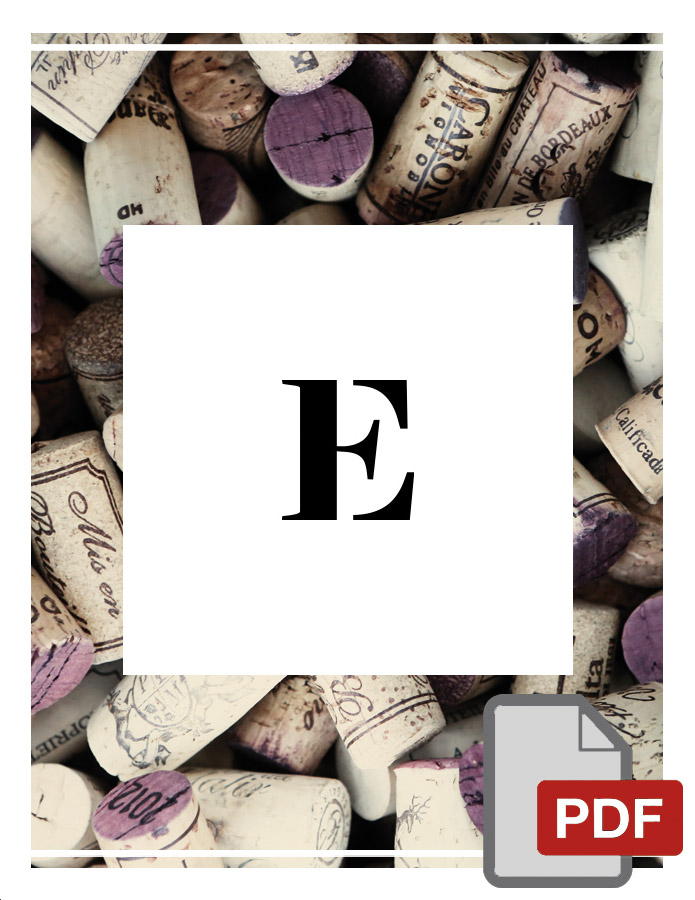Wineries
The Petrucco winery – on site visit

Hello All,
This week I went to visit the Petrucco winery in Butrio in Monte, in the heart of the DOC area of the Eastern Hills of Friuli. A wonderful location where, on clear days, you can see the Istrian coast and the sea.
Today Lina and Paolo Petrucco live in the winery villa; a wonderful couple of over eighty years old who welcome visitors with joy.
The Origins
The Petrucco family buys the company in the 70s but the first bottling takes place in 1981; in previous years, the wine made was consumed with relatives and friends; in fact for the first ten years of ownership the Petrucco family considered the estate as their country house where to relax and spend time with family and friends away from the chaos of the city.
The winery today
Today the company has 35 hectares of land, of which 16 are vineyards. The vines are located on a radius of two kilometers around the farm on land called “ponca”; a soil rich in both mineral salts and trace elements, both very suitable for growing grapes; in the vineyard between the vine rows there is grass; the winery choose to have grass for various reasons, among the most important are:
- protection of the soil so that the grass acts as a buffer and therefore the passage of the tractor does not ruin the ground
- the grass roots open channels in the ground that bring oxygen to the soil itself and therefore to the vine
- in case of grass rain the roots allow the water to drain quickly.
In very dry vintages they can decide (depending on the vintages) to eliminate the grass in alternate rows so that the nutrients of the soil are “eaten” by the vine and not by the grass,
The vineyards
Because the Petrucco vines are all in the hills, they are cultivated with a low stem (maximum height 90 centimeters); the distance between a plant and the other is about 80 cm and the distance between the rows is about 2.5 meters. For every hectare of land there are about 5,500 plants and the yield per plant is about 1 kg; the yield is kept deliberately low to preserve the quality of the grape itself and consequently of the wine produced.
The winery produces both white and red wines and currently the harvest is manual; some tests have been carried out for automatic harvest on the red grapes (the white ones are more delicate and must be handled with care) but for now it has been decided to continue manually also because a machine collects 80 quintals of grapes per hour against the 50kg of a human being and the cellar must be adequately structured to receive and process grapes quickly.
The wine making
For white wines, once they reach the cellar, the grapes are pressed (with air presses) softly (maximum 2 atmospheres; I remind you that the old presses pressed up to 150 atmospheres …).
Through a system made of cooled tubes, the must is moved from the press to the steel tanks where it is left to rest for 15/20 hours; after this time, the must is cleaned from large lees and left to rest further in the fine lees, then filtered and bottled.
For red wines instead, with a special machine, the grapes are de-stemmed and slightly crushed then moved to steel tanks where fermentation begins. During the fermentation phase, the skins (lighter) tend to form a hat at the top of the tank; 3 times a day with a special pump, the skins are brought down and mixed with the must; this process allows all “good peel substances” to remain in contact with the must in order to obtain a quality product.
The grape seeds
A separate discussion should be made for grape seeds … first of all it must be said that during fermentation they remain at the bottom of the tank because they area heavy; doing a quick calculation. .. for each grape there are two seeds; an average bunch of grapes has about 150 grapes, which means 300 seeds … think that on a kg of grapes, the seeds weigh about 150 grams … you can imagine how many there are in a tank that contains several hectoliters of wine!
Another very important thing … their taste … did you ever chew one when you eat grapes? If not … do it! If yes, you know that they don’t taste really good … they taste of wood and that taste can affect the wine; in particular if the grapes are harvested not totally ripe, the grape seeds are still green and if left in the wine during the fermentation phase for too long they create a “tannic green” flavor that does not improve with aging; therefore they must be removed within 4/5 days from the beginning of the fermentation.
The aging
All the red wines spend 12 months in wooden barrels and barrique (new and used), the year after harvest,
About the reserve line: the Merlot and Refosco spend from 18 to 24 months (depending on the vintage) in barrique while the Pignolo 36 months and after bottling, it rests for a further year and a half in bottle; in the cellar Petrucco has just labeled the Pignolo harvested in 2013; while 2014 was not produced because the year was rainy and the grapes quality was not good enough.
Nice to know
How are barrels and barriques preserved when not used? They are washed with water using a special stain with a pressure jet; dried with sulfur discs burned inside; then, to keep the barrel “healthy” a sulfur disk burns inside regularly (the frequency depends on the size of the barrel). Before reusing the barrel, it is washed with cold water in order to “inflate” the wood.
Bottling
The Petrucco winery decided to buy the equipment for bottling in 2000; before then he used mobile companies; companies that still exist and that have machinery on a truck (Friuli Venezia Giulia was the first region to offer this service throughout Italy) as I was saying, in 2000 the winery decided to have its own plant mainly for the foreign market that has specific needs; in fact every nation has very specific rules related to the import of wine.
I highly recommend visiting the winery; you can enjoy the location and the views but above all breathe the love and passion so present in the winery and of course taste some excellent wine!





